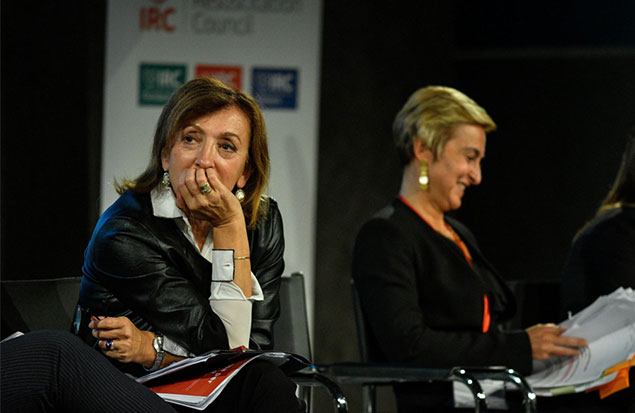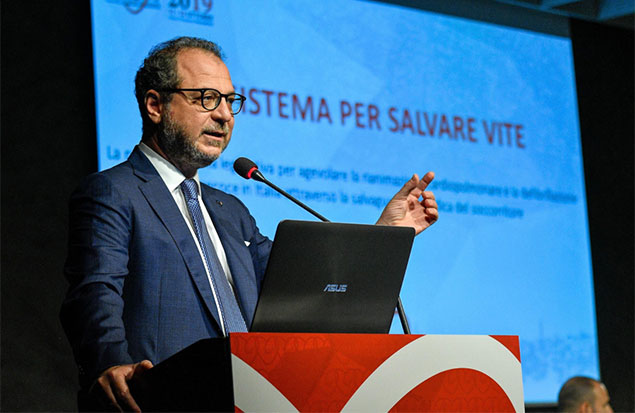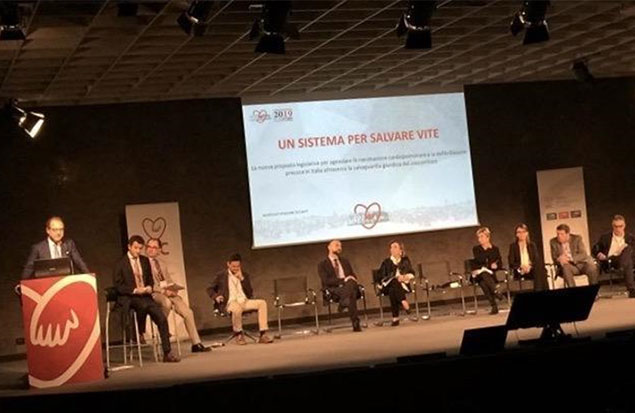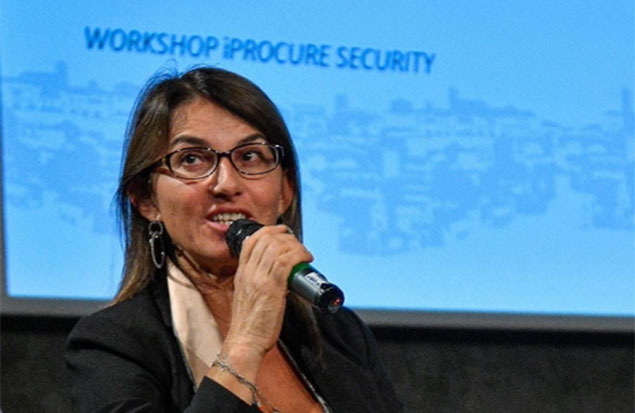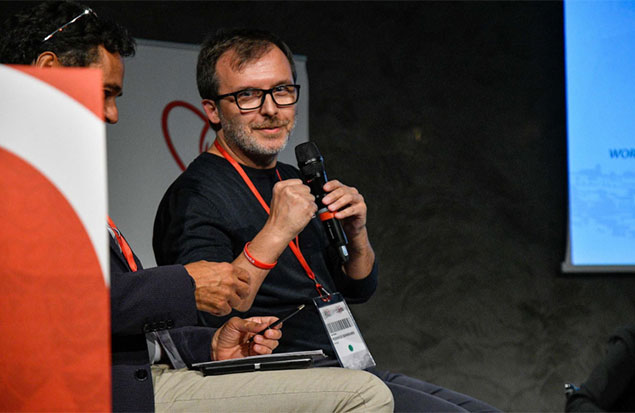11 October 2019, Verona – Italy, A System to Save Lives
This workshop was based on a roundtable, where all the speakers discussed legislative proposals to facilitate community engagement in the early emergency response in the instance of cardiac arrest by providing cardiopulmonary resuscitation and early defibrillation under the supervision of the local dispatch center. Legal aspects and advantages on victims’ outcome were deeply discussed.
The circle of participants included: two representative of the Chamber of Deputies, lawyers, the vice-secretary of the Ministry of Health, the IRC president, coordinators of emergency associations (EMS volunteers, Red Cross, etc.), health alderman, the creator of the Progetto Vita study (the first early defibrillation project born in Europe in 1998) and CEO of EMS in Veneto Region.
The event began with a brief speech by the vice Secretary of the Ministry of Health. She highlighted the importance of prevention and the efforts needed to increase the awareness of cardiac arrest and CPR. Next, the presenter elaborated on the importance of prevention of and the provision of analyzed data on sudden cardiac arrest deaths. In this context she illustrated the PNP 2020-2025, the new National Prevention Program 2020-2025, that will be developed in the coming months providing a renewed commitment in support to care for patients with cardiovascular diseases. Further on, the importance of having a map to track and localize and ultimately spread the use of semi-automatic defibrillators was also presented. The participant from the political sector concluded her speech by bringing up some examples for APPs that based on of geolocation technology indicate the nearest AEDs and promote their use to prompt early defibrillation while waiting for the arrival of an emergency medical specialist.
After the introduction phase, a roundtable with the title “The new legislative proposal to facilitate cardiopulmonary resuscitation and early defibrillation in Italy through the legal protection of the rescuer” started. The speakers of the roundtable were the President of the “Progetto VITA” Piacenza, ; the President of IRC Community; a representative of CONACUORE, a scientific association for heart diseases; a lawyer at CRI (Italian Red Cross); a politician from the Chamber of Deputy; a lawyer at the Court of Bologna; the President of ANPAS; a representative of Misericordie, confraternities of Catholic origin dedicated to the assistance of the needy; the IRC President; an official from the Chamber of Deputy and another politician from State Secretary for Health.
Each speaker had five minutes to illustrate his/her point of view and ideas about legislative proposals for the facilitation of lay rescuers interventions.
The President of the “Progetto VITA” Piacenza reported the success of “Progetto Vita Piacenza”. That was the first European project on public access to a defibrillator (PAD) which was initiated 20 years ago. She described the project and commented on the bureaucracy that has blocked the culture of cardiopulmonary resuscitation. She also introduced the APPs “Progetto Vita” and “DAE RespondER” and made all present EMS practitioners and lay rescuers start using them when CPR immediately and early defibrillation is needed.
The representative of Chamber of Deputy was the second speaker. He presented an example for a cardiac arrest occurring in an airplane and the rumors generated by media and population regarding this particular event of an emergency. He claimed that the idea of a national AED law was born because of that´ case. Therefore he demonstrated full political support in the parliament for the adoption of law that will regulate the use of AED and the provision of CPR by lay bystanders. There have been up to 8 parliamentary proposals in 3 months, ultimately merged into one law proposal accepted by all politicians from all parties. He expressed his gratitude to Dr Aschieri and Dr Scapigliati for removing all doubts of the parliamentarians in the Chamber. He also pointed out that all children should know how to use AED and remarked where and how AEDs should be placed (public places, types of vehicles, distances).
As a third speaker, the second political representative of Chamber of Deputy argued that the earlier intervention through the legislators can save more lives. In this context, he stated that the new Italian legislation is also a safeguard and a protective norm for the laypeople. However, he added, important financial resources are still needed.
The fourth speaker, the layer from Court of Bologna, who created the structure of the law proposal, described the limit of the current law. According to the current state the use of an AED was authorized only for healthcare workers and for laypeople with specific training. She supported the idea to make the use of AED possible for everyone since based on the article 54 in the Italian law (penal code) which protects lay people using an AED to save a life.
Read More
Prof. Fabrizio Pregliasco focused on the need to capillary increase in the awareness and training of the community. He underlined the importance of the APP to localize AEDs and supported the idea of arranging the automated external defibrillator (AED) on all emergency vehicles, even on those used for public transport.
Lawyer Cristiana Mei reported on position of the Italian Red Cross by claiming that AEDs should be free to use and free for everyone.
Dr. Mattia Gavagni talked about a school project in Tuscany, named “ASSO”. During this project, 18,000 students from high school were trained to use CPR and AED. He pinpointed out that there is a need to raise awareness of cardiac arrest among students, beginning from elementary school.
Dr. Leonardo Braschi remarked during the discussion that on average basis the ambulance arrives on the scene within 10 minutes after the placement of the emergency call. Therefore it is important to let lay rescuers intervene providing CPR and defibrillation with an AED.
The president of IRC highlighted the problem regarding finding financial funds for the purchase of AEDs and to better describe and specify what the responsibilities could be for those who do not perform regular maintenance of AEDs.
11 October 2019
Verona – Italy
